Figures & data
Figure 1. FOS2MAN – Simplified diagram of the Entity-Relationship model (after CitationOrtolano & Zappala, 2012 modified). Acronym meaning: SEM: Scanning Electron Microscope; EPMA: Electron Probe Micro Analyzer; SHRIMP: Sensitive High Resolution Ion Micro Probe

Figure 2. FOS2MAN – Conceptual model of the Entity-Relationship (after CitationOrtolano & Zappala, 2012 modified)
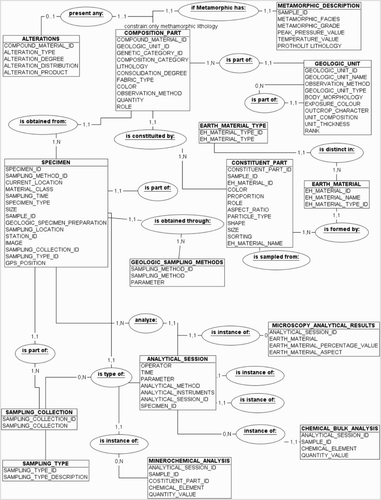
Figure 3. Synthesis of geological setting (a) Areal distribution of Alpine belt in the central Mediterranean realm; (b) Geological sketch map of Calabrian Peloritani Orogen (CPO) (modified after CitationAngì et al. 2010; CitationCirrincione et al., 2011). (c) Geological sketch map of the Aspromonte Massif (after CitationPezzino et al., 1990, Citation2008; CitationOrtolano et al., 2005; CitationFazio et al., 2008).
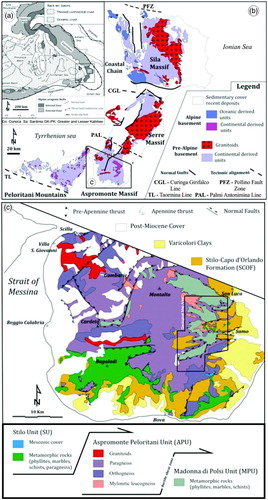
Figure 4. General mesoscopic features of the outcropping units (a) Klippen of phyllite of the Stilo Unit partially covered, in basal unconformity, by arenaceous levels of the Stilo-Capo D'Orlando Formation (SCOF); (a’) particular of the SU phyllite with widespread presence of quartz-rich isoclinals hinge depicting the SUS1 surface; (b) mylonitic leucocratic gneiss of the Aspromonte Peloritani Unit with kinematic indicator consistent with a top to NE sense of shear in the present-day geographic coordinates; (d) SCC’ mylonitic fabric in garnet-muscovite schist of the Madonna di Polsi Unit consistent with a top to NE sense of shear; (d) Particular of the stratigraphic basal alternance of the SCOF sequence passing from relatively thin levels of phyllite-rich clasts to relatively thick arenaceous levels.
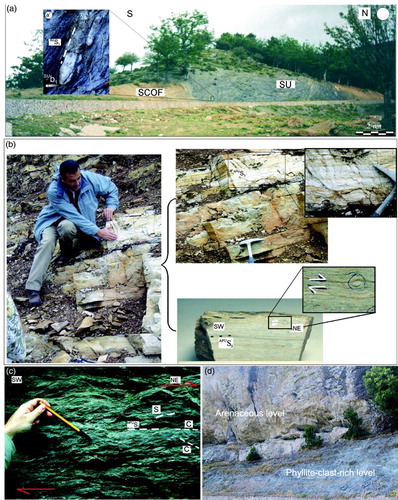
Figure 5. Sequence of the blasto-deformation events of the metamorphic basement units of the studied area: (a) Stilo Unit; (b) Aspromonte Peloritani Unit; (c) Madonna di Polsi Unit (see text for the meaning of the acronyms)
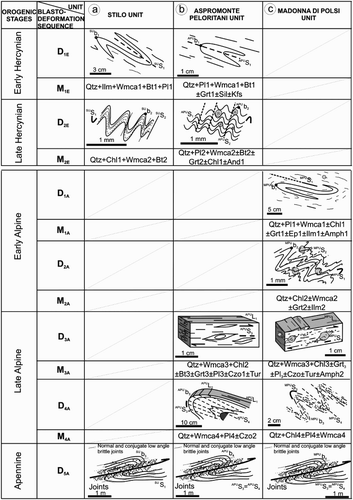
Figure 6. Relic of isoclinals hinge within mylonitic layers in amphibole schist of the Madonna di Polsi Unit (Aposcipo river).

Figure 7. (a) Post-mylonitic isoclinal folding in laminated leucocratic gneiss (APU); (b), (c), (d) Fractal distribution of thrusting activity from centimeter to meter sized ramp and flat structures; (e) Triangular facets delineating normal fault planes along the southern slope of Monte Perre (Map 1).

Figure 8. Petrographical features of the Madonna di Polsi Unit (a) Inclusion trails within garnet porphyroclast of the MPU (nicols +); (b)Intrafoliar folds within mylonitic levels (MPU) (nicols +); (c) Oblique foliation given by the preferential elongation of new forming quartz grains within pseudomorphosed ribbon-like quartz level (MPU) (nicols + with quartz wedge); (d) Mylonitic micaschist with σ-type plagioclase porphyroclast and SC structure consistent with a top to NE sense of shear (MPU) (nicols +).
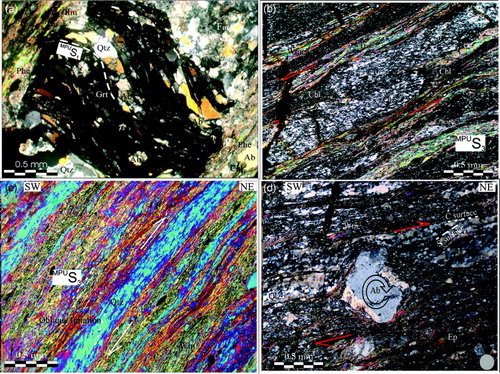
Figure 9. Petrographical features of the Aspromonte-Peloritani Unit (a) axial planar schistosity (APUS1) highlighted by Qtz + Pl1 + Bt1 + Wmca1 + Grt1 + Sill assemblage (nicols +); (b) Incipient crenulation schistosity (APUS2) developing in lepidoblastic levels of the sillimanite bearing paragneiss (APU) (nicols +); (c) Mylonitic paragneiss of the APU with SC structure consistent with a top to NE sense of shear (nicols +); (d) Mylonitic leucogneiss of the APU with δ-type and antithetic book-shelf-sliding structure consistent with a top to NNE sense of shear (nicols +); (e), (f) Post-mylonitic isoclinals folding with formation of new axial plane foliation (APUS4) (nicols +).
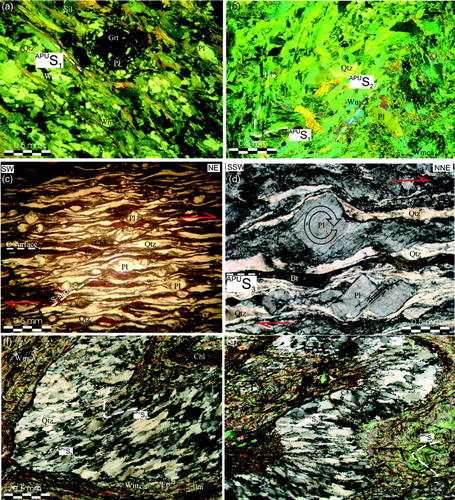
Figure 10. Petrographical features of the Stilo Unit (a) (nicols +), (b) (nicols =) Incipient crenulation schistosity (SUS2) due to the micro-folding of the (SUS1) surface.

